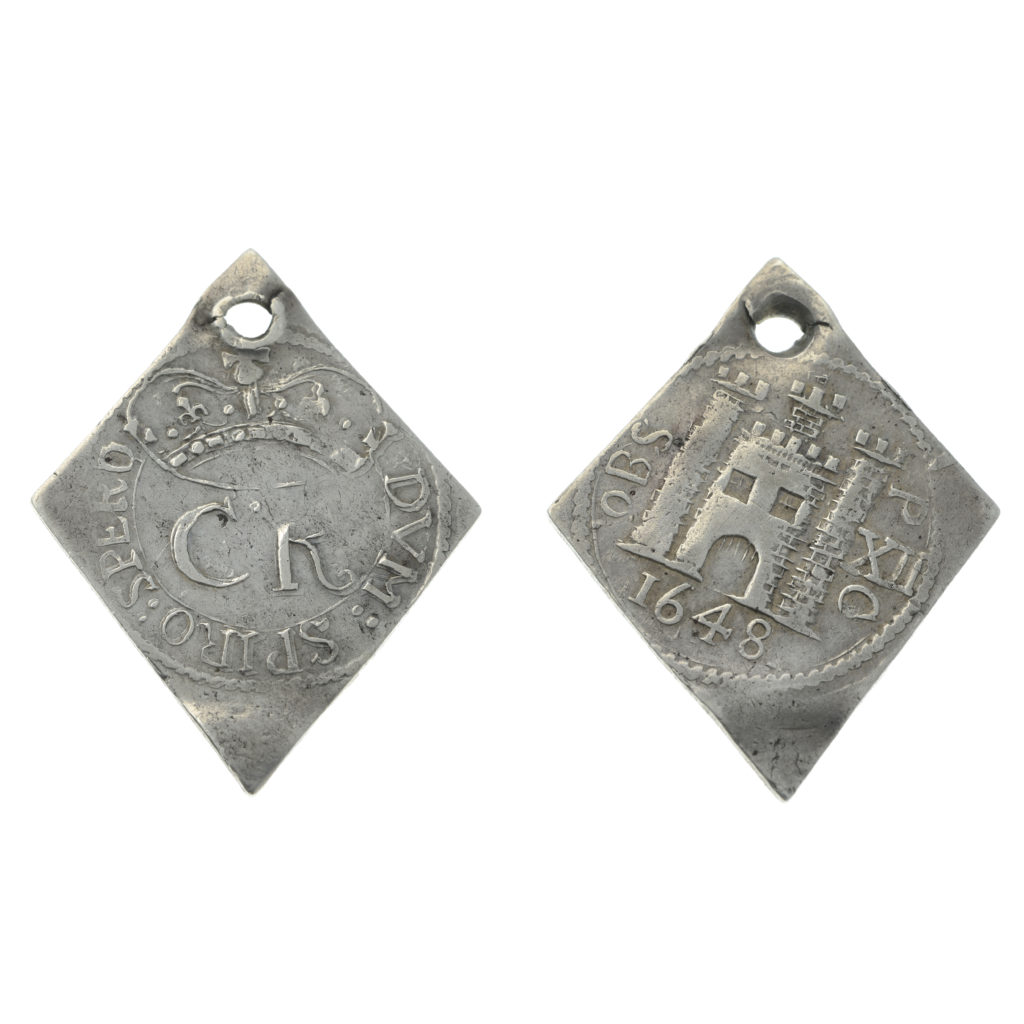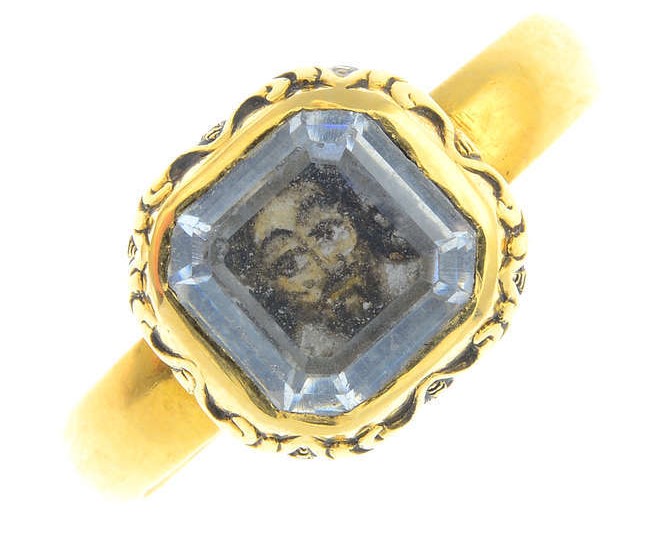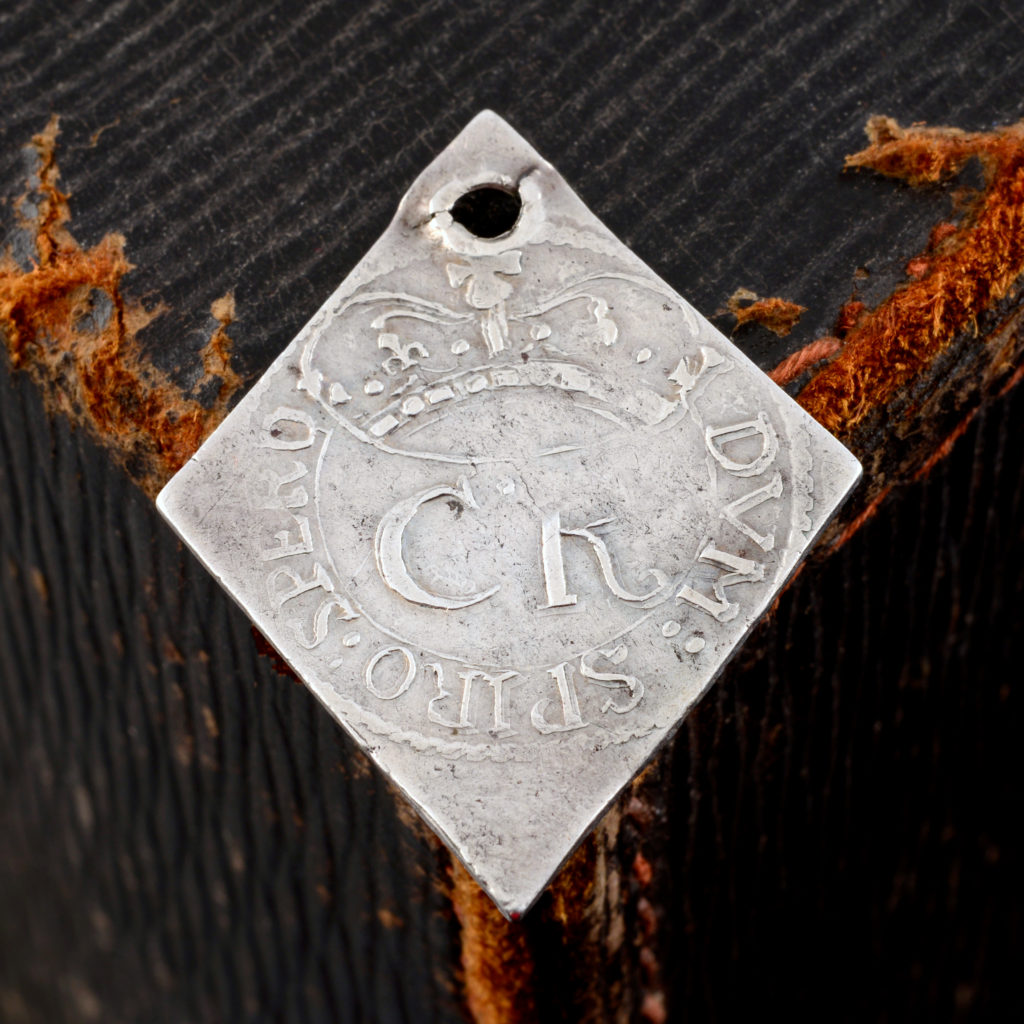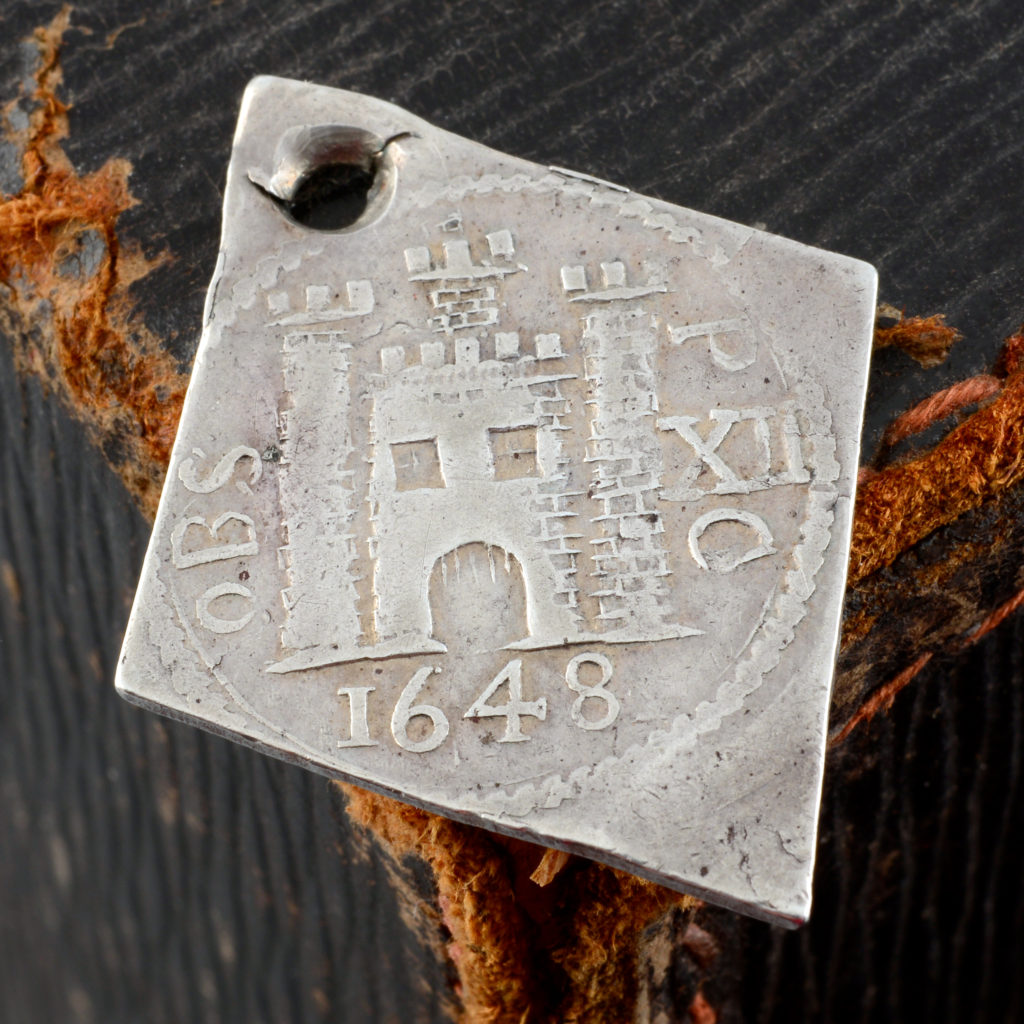A Pontefract siege coin was a bit of a mystery to all at Fellows apart from our numismatics specialist Sally Oliver. She immediately identified that this strangely shaped coin was a shilling from 1648. This silver coin, minted during the English Civil War, gives us a glimpse into a turbulent time in British history.
This coin isn't just a piece of currency. It's a tangible link to a crucial moment in history when England was torn apart by civil war.
A Seventeenth-Century Civil War
The English Civil War lasted from 1642 to 1651. This conflict resulted in the execution of King Charles I in 1649. Following this regicide, Oliver Cromwell established the Commonwealth which ended with the restoration of the monarchy (Charles II) in 1660. In the space of 25 years, the conflict that took place across the country shaped British political and constitutional history. The battles which were waged between Parliamentarians (also known as"Roundheads") and Royalists (also known as"Cavaliers") ultimately led to the development of parliamentary democracy as we know it today.
Pontefract Castle
In November 1648, Pontefract Castle became a pivotal site during the English Civil War. Undeniably its location in the north of England was the main reason for this. The town was in between Royalist strongholds in the north and Parliamentarian territories in the south. Therefore, controlling Pontefract meant controlling crucial communication and supply routes. The castle's structure was undoubtedly a benefit for those who controlled it. Its sturdy fortifications made it a formidable stronghold, allowing whoever held it to exert influence over the surrounding region.
Royalist forces, loyal to King Charles I, held the castle against Parliamentarian troops. The Parliamentarians, determined to end Royalist resistance, besieged the castle for over a month. Despite fierce resistance, hunger, and disease within the castle walls, the Royalists ultimately surrendered, marking a significant victory for the Parliamentarians in the final stages of the Civil War. As one of the last Royalist bastions in the north, its capture by Parliamentarian forces in 1648 helped secure their dominance in the final stages of the conflict.
Without a doubt, Pontefract Castle has had a gret impact on British history aside from the events of The Civil War. From the murder of Richard II to Katherine Howard's alleged indiscretions during her marriage to Henry VIII, you can learn more about it in the video below.
Examined: the Pontefract Siege Coin
Sally Oliver our Coins & Medals Specialist spoke to historian Julian Humphrys about the shilling. As well as the coin itself, they also explore the historical context in which it was made. Watch the video on our YouTube channel to discover the little-known story behind the Pontefract siege coin from the English Civil War.
You will find out more about Pontefract's significance to the Parliamentarian and Royalist fourses, as well as learn about the key figures of the siege.
Understanding the Pontefract Siege Coin
In the video, Sally and Julian explained the markings on the coin. We have recapped some of the key inscriptions here.
On one side, you'll see the letters "DVM: SPIRO: SPERO," Latin for "While I breathe, I hope." It's a powerful reminder of the resilience of the people living through those troubled times. It was a motto for the Royalists, denoting their undying support of their king. Surrounded by these words, you'll find the monogram "CR" topped with a crown. These letters represent King Charles I and his authority.
The other side tells the story of where this coin was struck and used. There, you'll see Pontefract Castle, standing strong amidst a siege. The letters "OBS" underneath signify the siege. OBS" stands for the Latin word "obsidium" meaning "siege".
Make sure to watch the video to find out how these coins were made and where the Royalists found the silver to make them. You'll also learn why the coins are such an unusual lozenge shape.
The coin featured as Lot 14 in the Monies, Medals & Militaria auction on Thursday 25th April 2024.
It achieved a realised price of Price Realised: £1,858 including fees.

Want to learn more about the English Civil War with Fellows?
We have some great resources:
Killing a king: the regicide of Charles I
At 2pm, on Tuesday 30 January 1649, King Charles I stepped onto a wooden scaffold outside Whitehall’s Banqueting House, knelt down in front of an audience of thousands and was publicly beheaded as a traitor. From imprisonment and trial to execution and legacy, historian Rebecca Rideal unravels one of the most important events in British history – the regicide of Charles I. Access the recording here.

Stuart Crystal Jewellery

In December 2018, Fellows sold a 17th century Stuart crystal memorial portrait ring, depicting Charles I for £4,083.20 (including fees).
The execution of Charles I prompted the emergence of memorial jewellery in Puritan England, with loyal Royalist supporters wearing jewellery set with a secret inscription or image to mourn their deceased king. Find out more on our blog.














